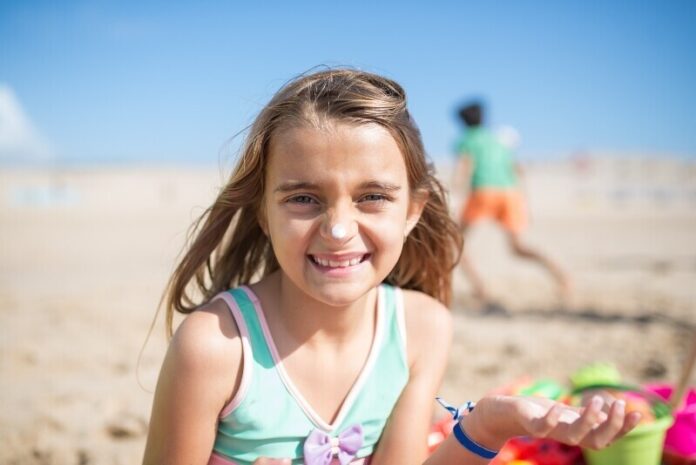By Lauren Lim, DO

With school out and community pools open, children are racing outside to play and that means it’s time to think about sun protection.
Sunscreen is a proven prophylactic that minimizes the damaging effects of the sun’s UV light and reduces skin cancer risk. It is particularly important for children to be protected from the sun because their skin has not yet developed some of the natural defense mechanisms against sunlight that is seen in adult skin.
There are two different types of sunscreens to choose from, chemical and mineral.
Chemical sunscreens use active ingredients such as avobenzone, oxybenzone and octinoxate to absorb harmful UV light and convert it to harmless heat. Mineral-based sunscreens create a physical barrier and act as a shield against harmful UV rays. These sunscreens often leave a white coating on the skin when applied and contain active ingredients such as titanium dioxide and zinc oxide. These types of sunscreens are great to use for younger children and people with sensitive skin.
For children six months and younger, it’s recommended to keep their skin covered with protective clothing and keep them in the shade. Sunscreen for children under six months should be discussed with a pediatrician before use.
If you still have questions about which sunscreen to use for your children, ask your local pediatrician.
For sunscreen to be effective, it should be applied at 30 to 60 minutes before sun exposure. Children should reapply sunscreen every two hours and more frequently if they are in and out of the pool or sweating. Children should use sunscreen with a sun protection factor (SPF) of at least 15 or higher.
Try to avoid outside activity between 10 a.m. and 4 p.m. when the sun’s rays are the strongest. In addition, it’s critical that children stay hydrated throughout the day. Make sure they drink plenty of water and are urinating at least three times a day.
Signs of too much sun exposure include bubbling on the skin’s surface, pink skin that lasts for 12 hours or more and peeling that does not subside after a week. If the skin becomes a dark red and your child starts showing symptoms of fever, headache, nausea or vomiting, seek the help of a medical professional immediately.
While you’re out enjoying the long summer days with family, remember the use of sunscreen is far safer than unprotected exposure to the sun. If you still have questions about sunscreen use for your children, call Vanderbilt Integrated Pediatrics Tullahoma at 931-393-7060.




















